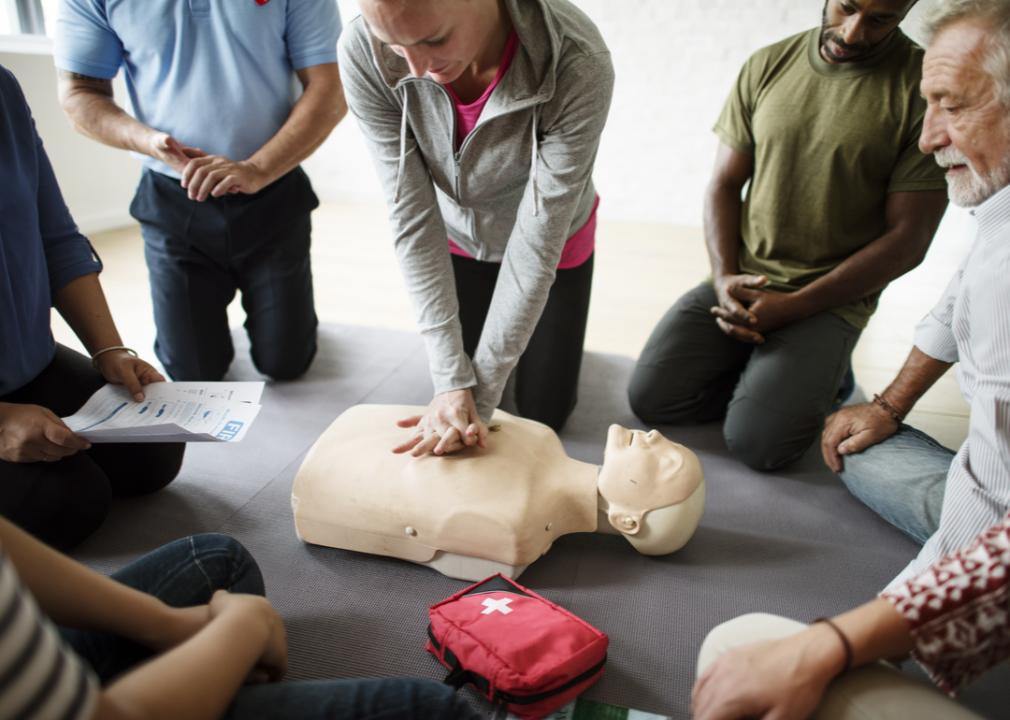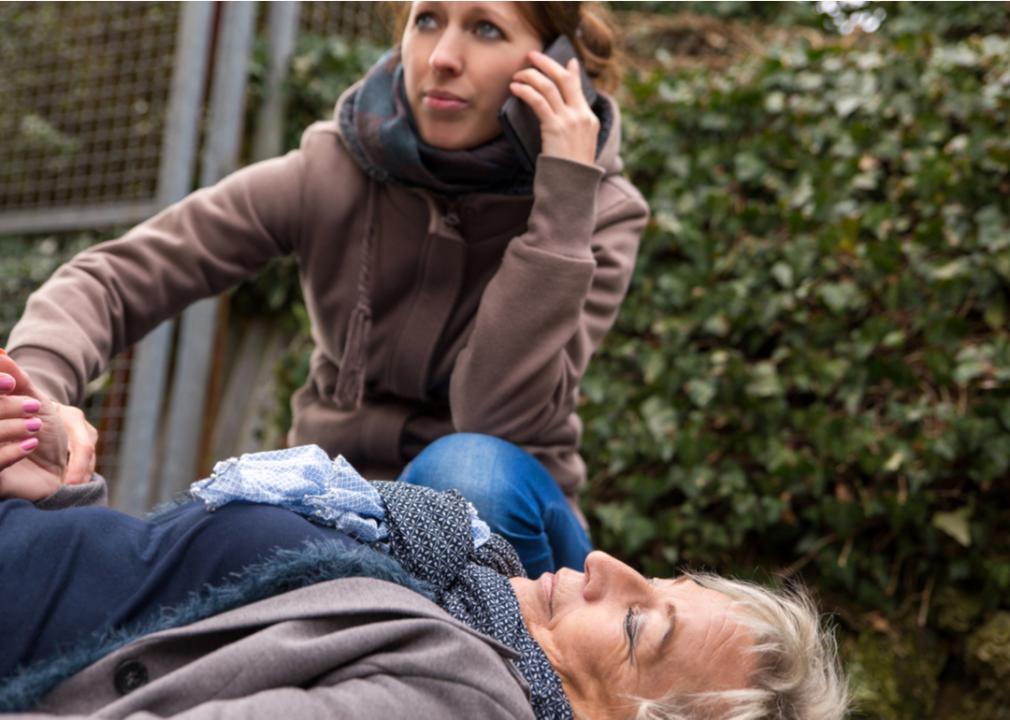How 3 factors impact CPR survival rates

PanuShot // Shutterstock
How 3 factors impact CPR survival rates
When done correctly, cardiopulmonary resuscitation, or CPR, has the potential to save lives. This technique is used in medical emergencies such as cardiac arrest to maintain the flow of oxygen-rich blood to the brain and throughout the rest of the body. CPR is often performed leading up to emergency medical services’ arrival and until a normal heart rhythm is restored.
For patients who go into cardiac arrest outside of a hospital, there are several factors that increase their chances of making it to the hospital and recovering well enough to be safely discharged. These factors include having the event witnessed by a bystander or emergency medical services and receiving CPR as soon as possible. Researchers have found that survival rates have increased over the last 40 years among those who received CPR up to one year following an out-of-hospital cardiac arrest.
Citing research analyzing CPR survival rate data collected across 88 studies from around the world, ACLS Medical Training looked at how three key factors impact survival rates. These three factors are then broken down into how they impact survival to hospital admission, after discharge from the hospital, and then one month and one year afterward.
![]()

Rawpixel.com // Shutterstock
Bystander versus EMS CPR
– Survival to admission:
— Bystander CPR: 26.3%
— EMS CPR: 36.3%
— Unspecific CPR: 29.6%
– Survival to discharge:
— Bystander CPR: 22.8%
— EMS CPR: 25.5%
— Unspecific CPR: 21.1%
– One-month survival:
— Bystander CPR: 11.3%
— EMS CPR: 10.7%
— Unspecific CPR: 7.7%
– One-year survival:
— Bystander CPR: 12.8%
— EMS CPR: 12.3%
— Unspecific CPR: 7.9%
When someone’s heart can’t circulate blood on its own, performing CPR can be critical until the patient gets to the hospital. Emergency medical service responders are trained to perform CPR at a rate of 30 compressions per two rescue breaths. EMS responders are essentially acting in place of the heart—each compression manually pushes blood through to the brain and other tissues. Even partially restoring blood flow can increase the chances of resuscitation.
Though bystander CPR has a lower survival rate than EMS responders, it can still improve the chances of survival. The American Heart Association encourages adults and even children to learn hands-only CPR, which is performing 100 to 120 chest compressions per minute with no mouth-to-mouth breaths. Research has found that higher quality CPR training and initiating CPR as soon as possible after a collapse significantly improve long-term survival outcomes.

islandboy_stocker // Shutterstock
Whether the cardiac arrest was witnessed by anyone
– Survival to admission:
— Witnessed: 36.4%
— Not witnessed: 36.6%
— Mixed: 23.7%
— Unspecific events: 28.2%
– Survival to discharge:
— Witnessed: 23.2%
— Not witnessed: 24.7%
— Mixed: 21.6%
— Unspecific events: 19.2%
– One-month survival:
— Witnessed: 10.5%
— Not witnessed: 4.4%
— Mixed: 8.2%
— Unspecific events: 8.9%
– One-year survival:
— Witnessed: 13.2%
— Not witnessed: not applicable
— Mixed: 8.3%
— Unspecific events: not applicable
In a randomized clinical trial of 874 patients, those whose cardiac arrest was witnessed by a bystander had more than twice the rate of survival than those whose cardiac arrest was not—but with some caveats.
Although bystanders performed CPR on 32% of patients, early bystander CPR was not associated with increased survival. The researchers found that early bystander CPR didn’t always improve survival either because CPR was not performed properly or its effectiveness decreased after a few minutes. These findings emphasize the importance of raising public awareness about CPR training and early notification of paramedics by bystanders.

Miriam Doerr Martin Frommherz // Shutterstock
Location where CPR was performed
– Survival to admission:
— Oceania: 33.5%
— Europe: 25.7%
— North America: 20.5%
— Asia: 15.6%
– Survival to discharge:
— Oceania: 16.2%
— Europe: 11.7%
— North America: 7.7%
— Asia: 4.5%
– One-month survival:
— Oceania: 16.0%
— Europe: 9.0%
— North America: 6.5%
— Asia: 12.8%
– One-year survival:
— Oceania: 11.5%
— Europe: 9.2%
— North America: 4.0%
— Asia: 5.3%
Comparing post-CPR survival rates in Europe, North America, Asia, and Oceania (a region that includes Australia and Polynesia), researchers found that there is a higher rate of survival in Western countries. The popularity of CPR classes among the general public is more recent in most Asian countries than in Europe and the U.S., so the quality of bystander CPR may be lower there. South Korea and China have a much higher prevalence of CPR training than other Asian countries, thus survival rates may be higher there.
The threshold for starting CPR by paramedics is also lower in some non-Western countries. These factors may lead to lower survival rates for out-of-hospital cardiac arrest in Asia. Promoting awareness about the importance of CPR training is something governments and health authorities can do to improve outcomes for patients who have out-of-hospital cardiac arrests.
This story originally appeared on ACLS Medical Training
and was produced and distributed in partnership with Stacker Studio.